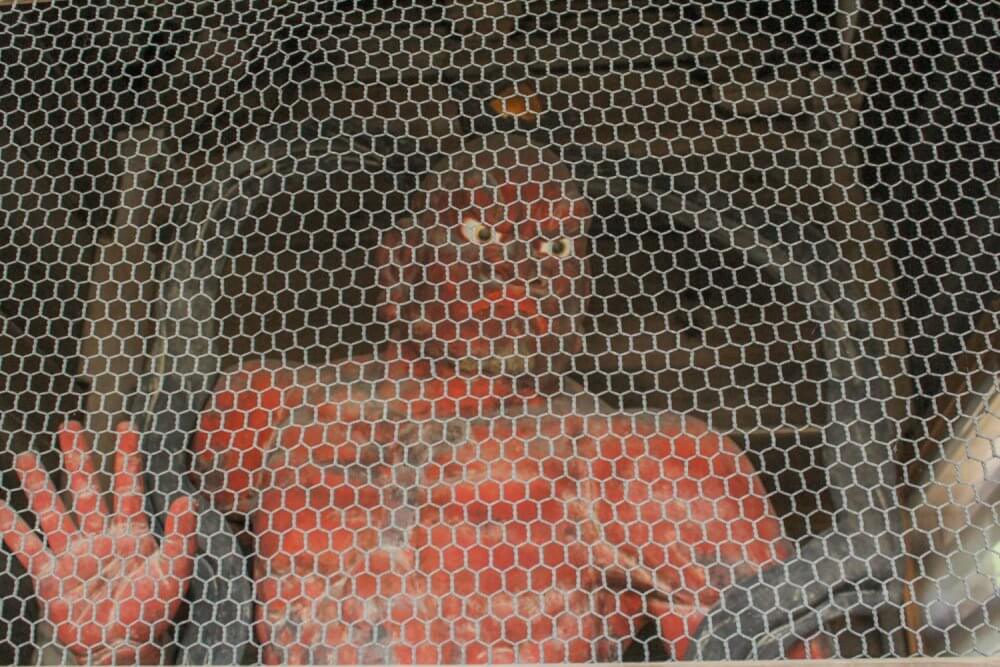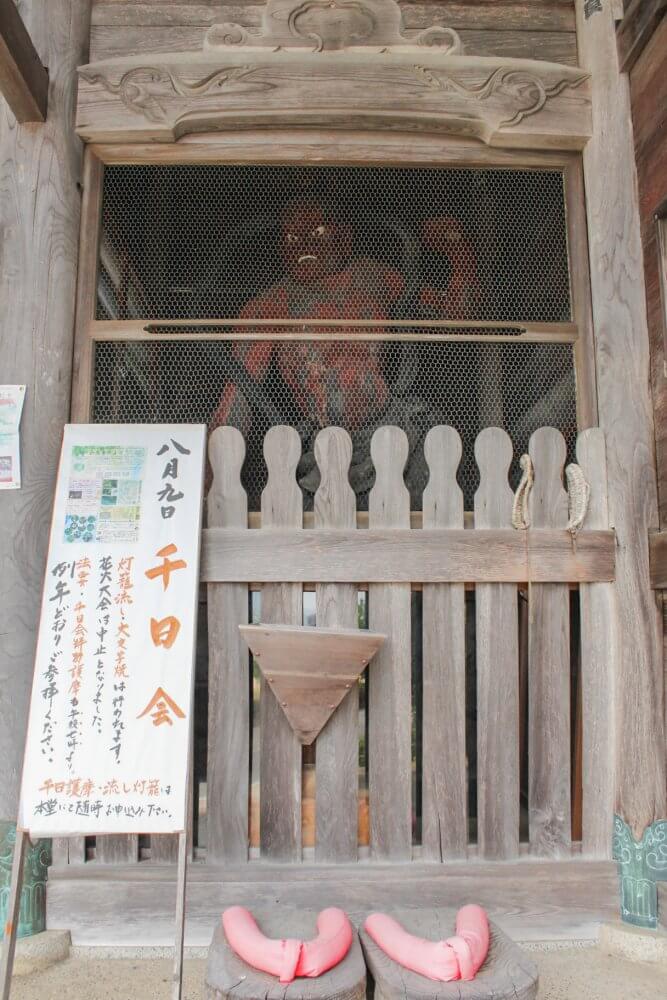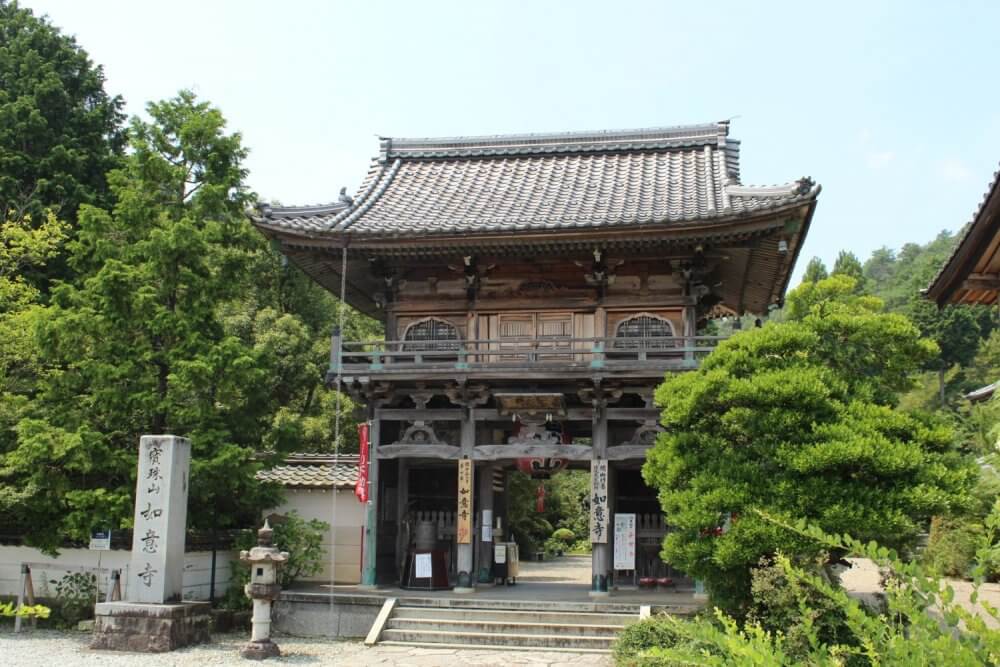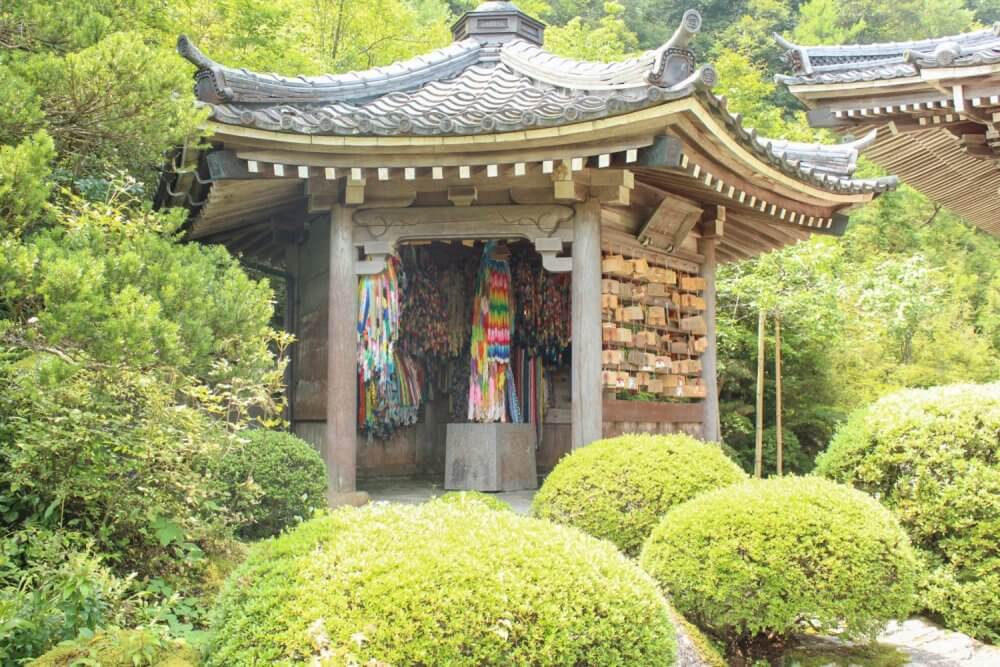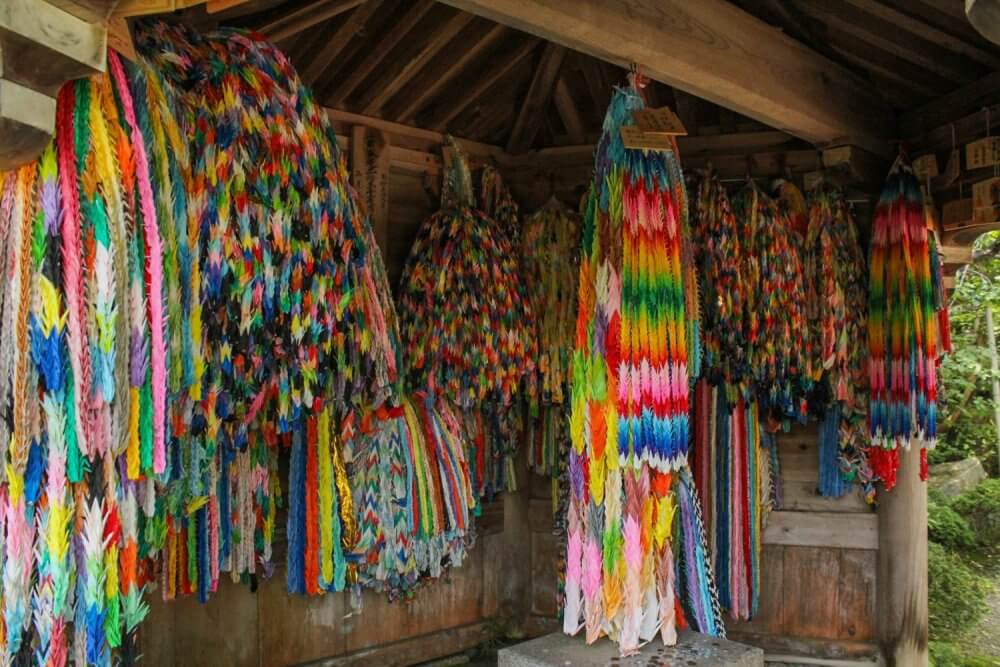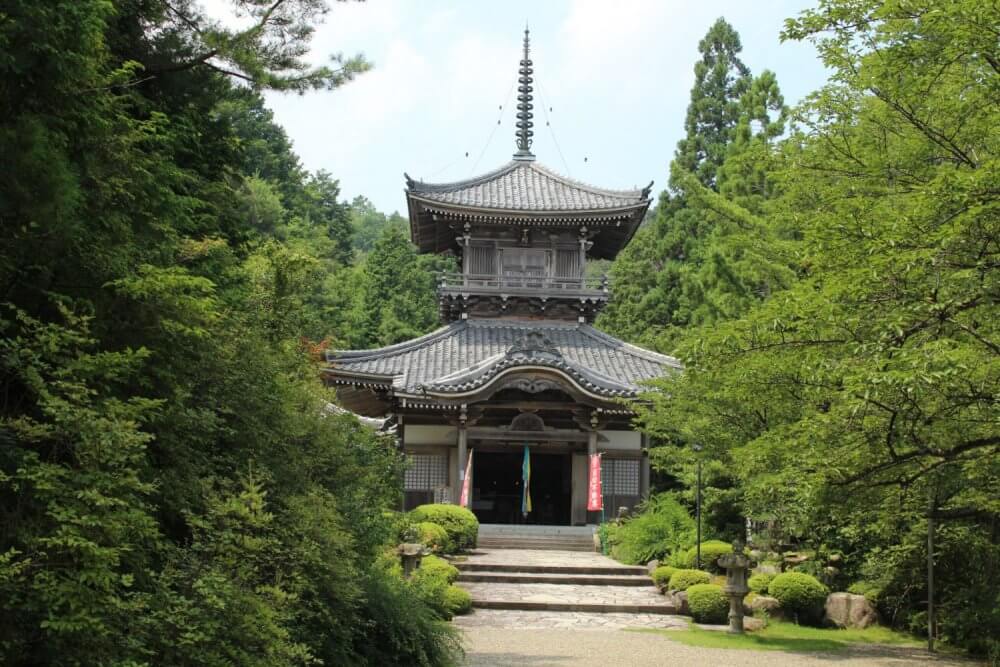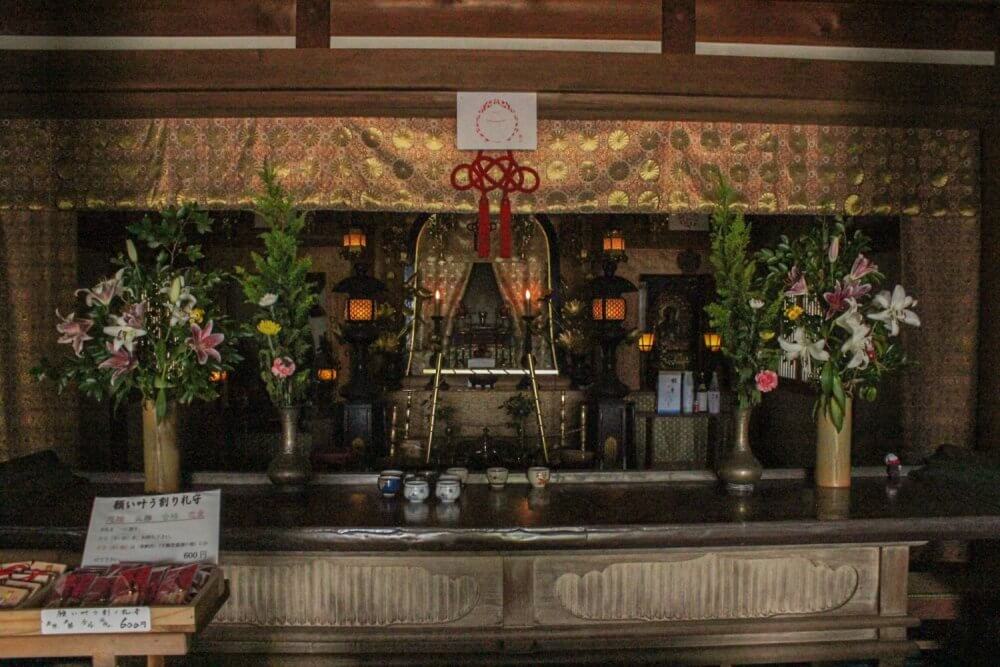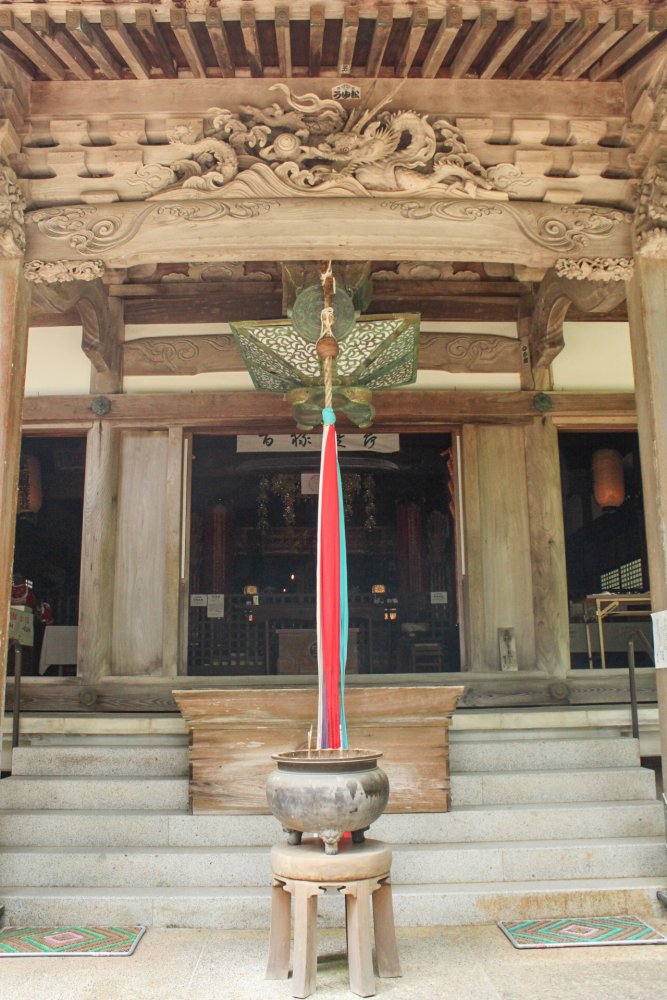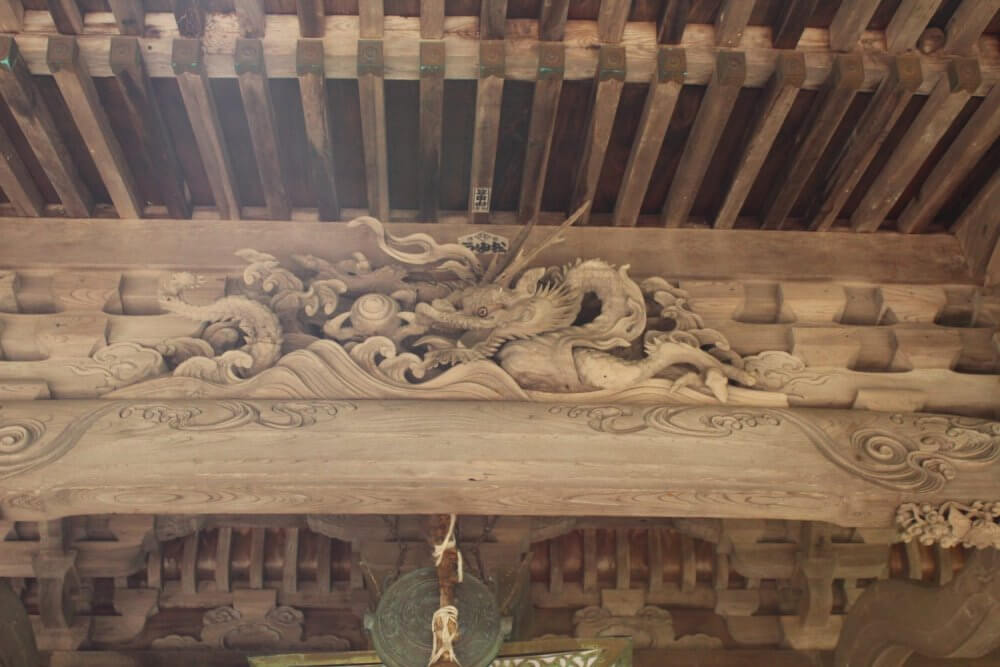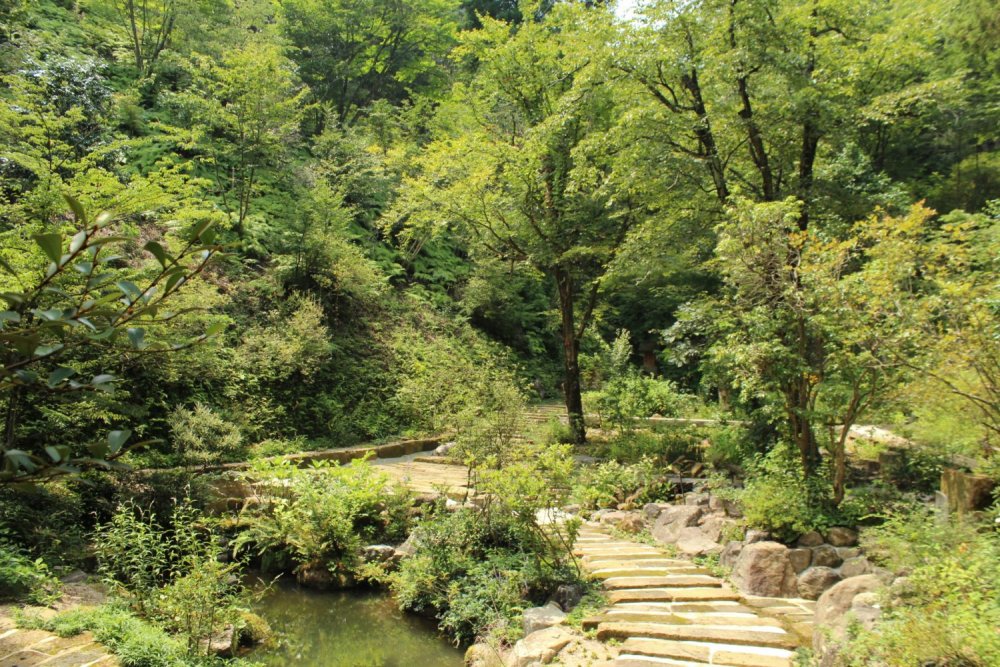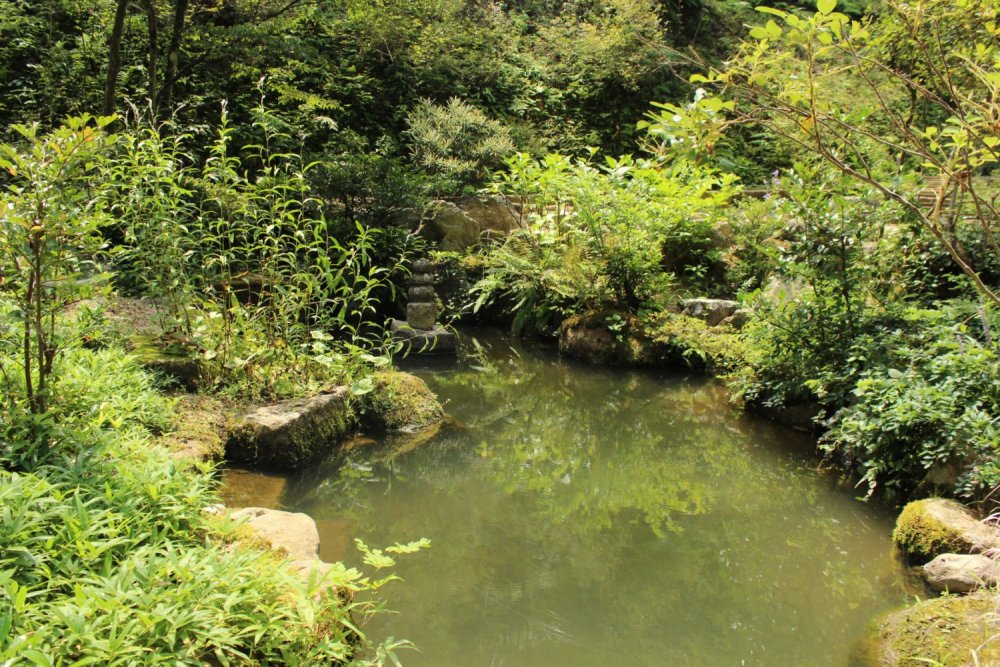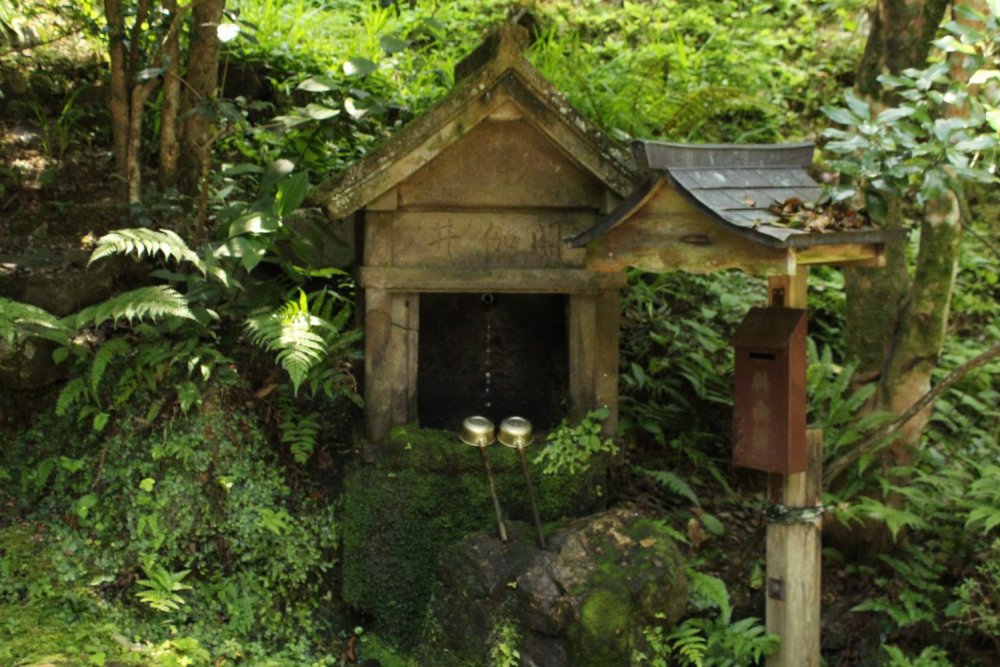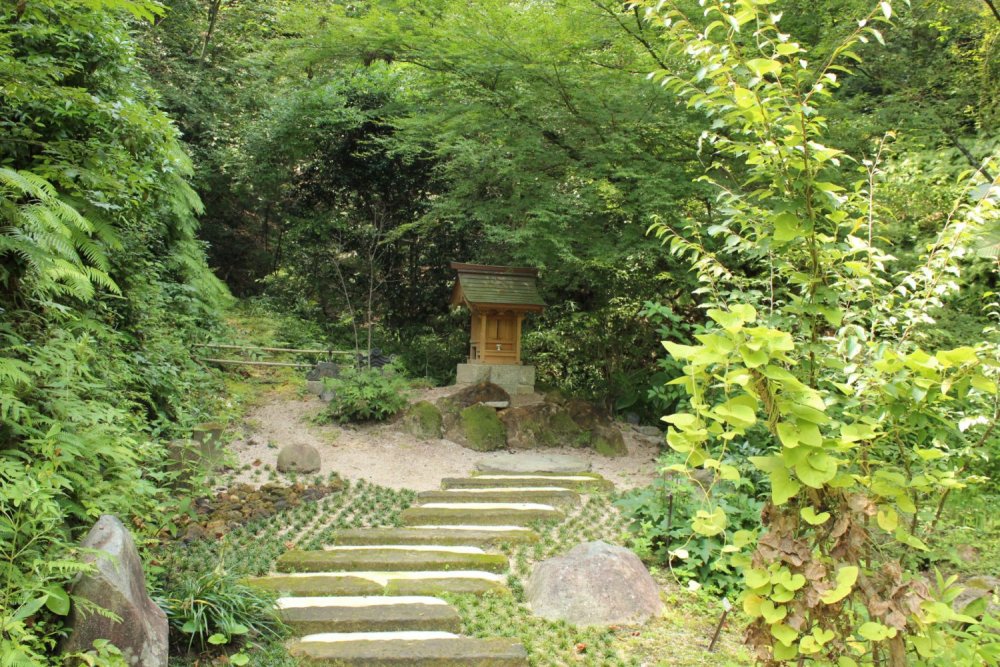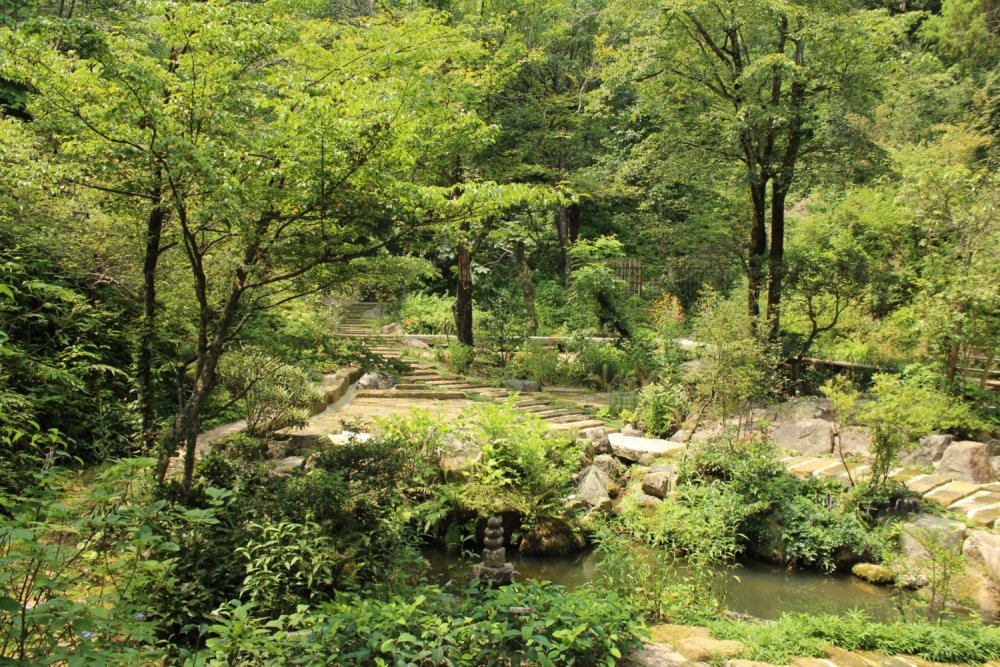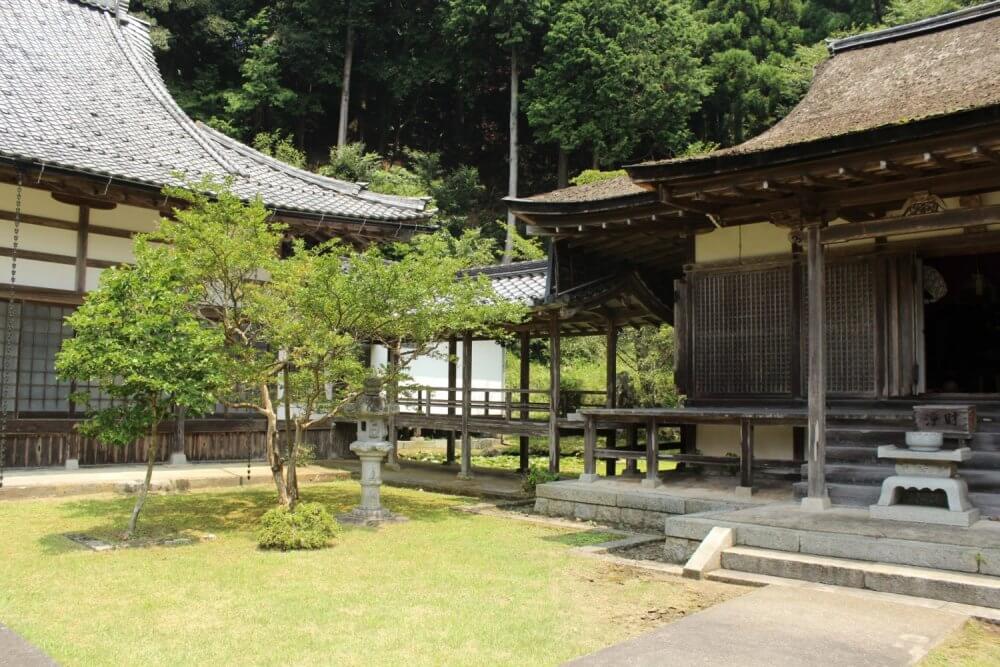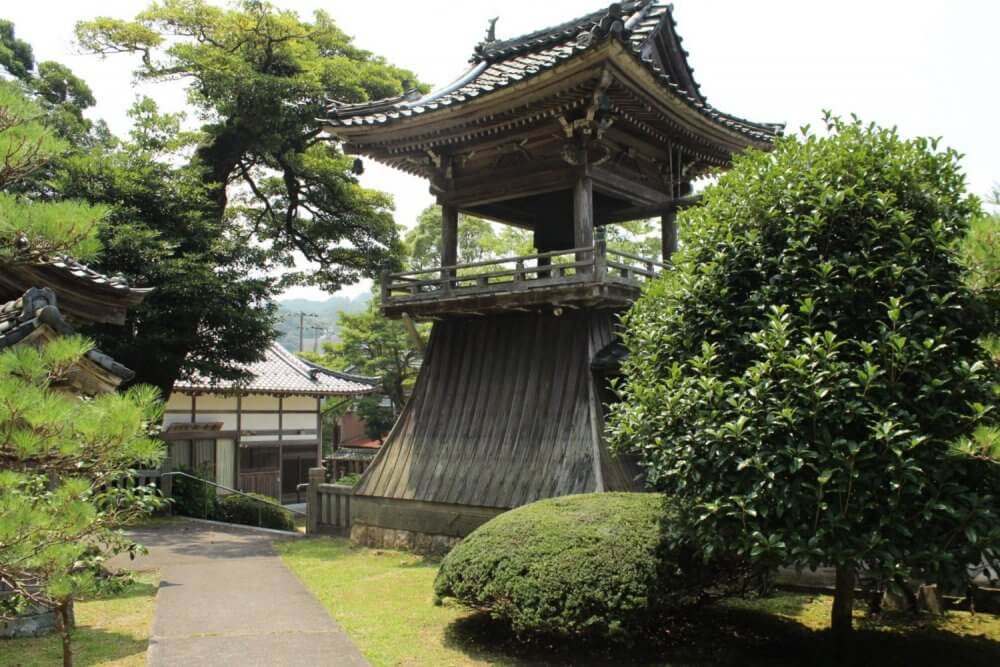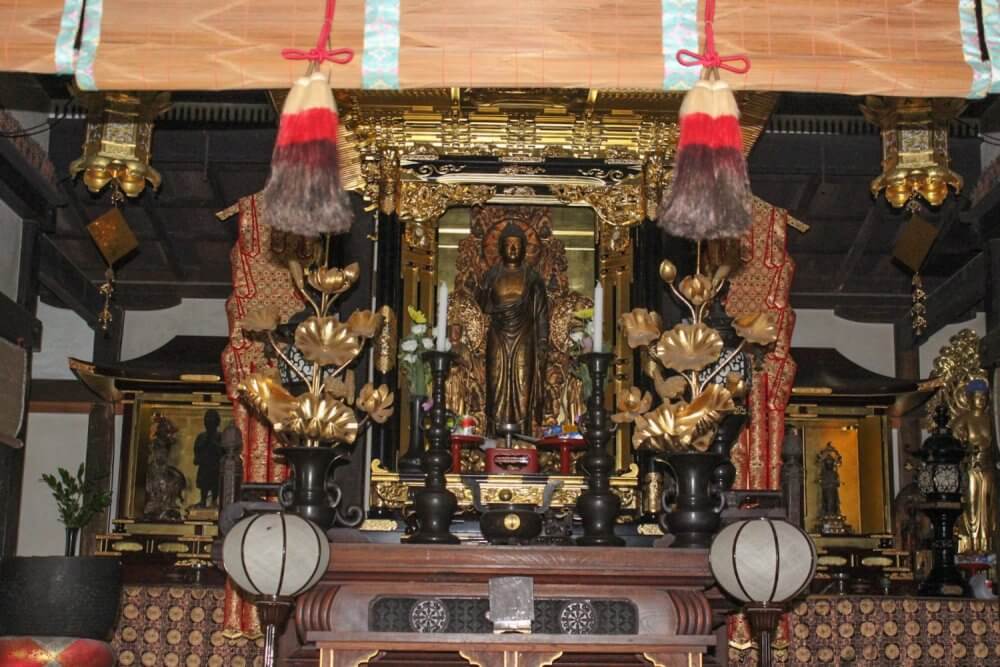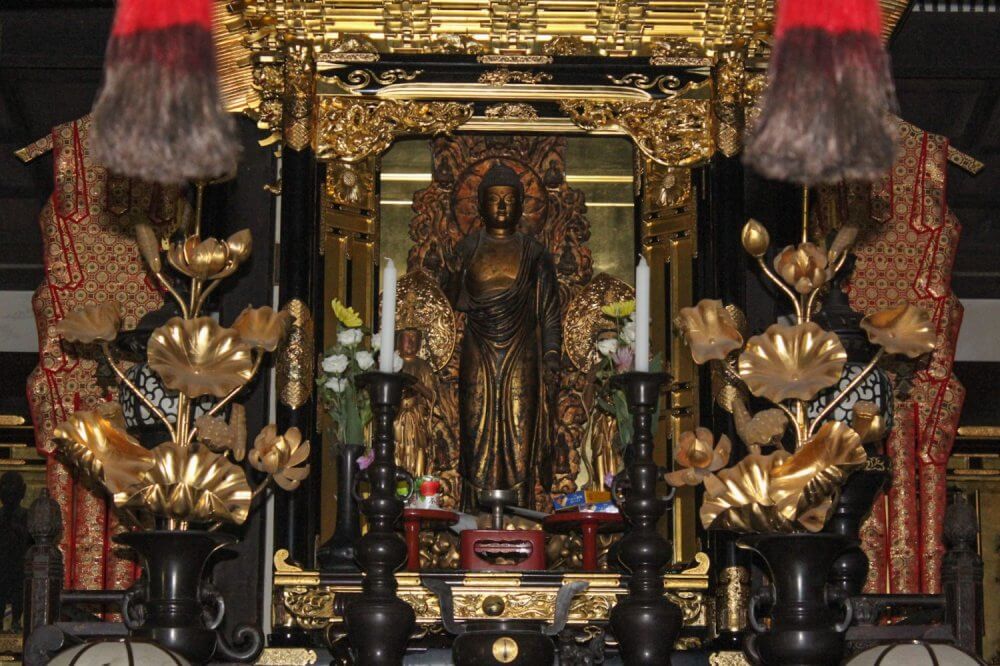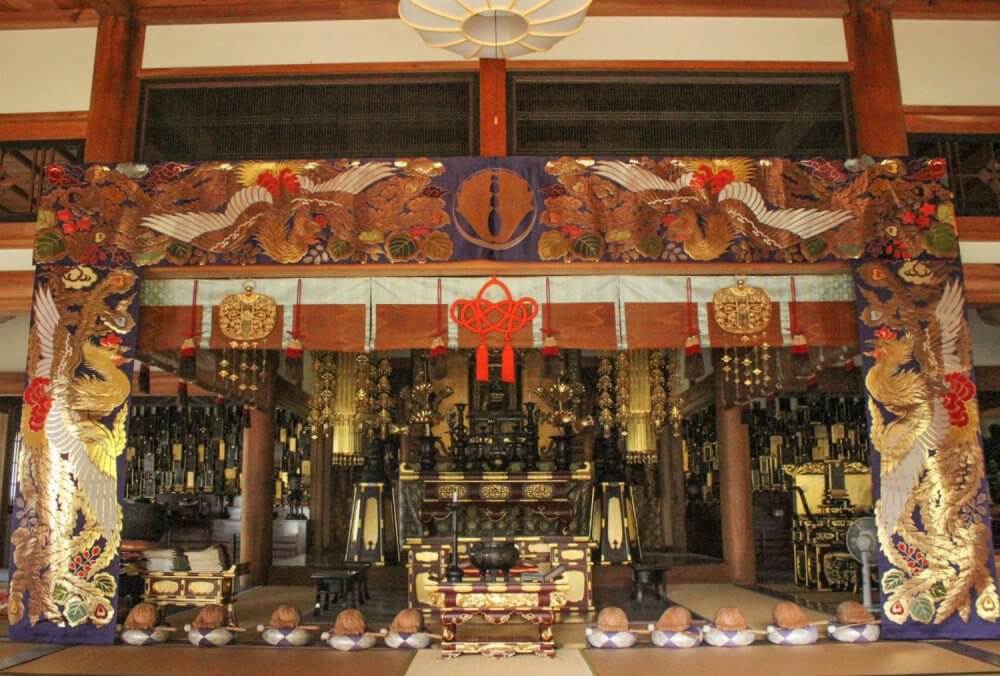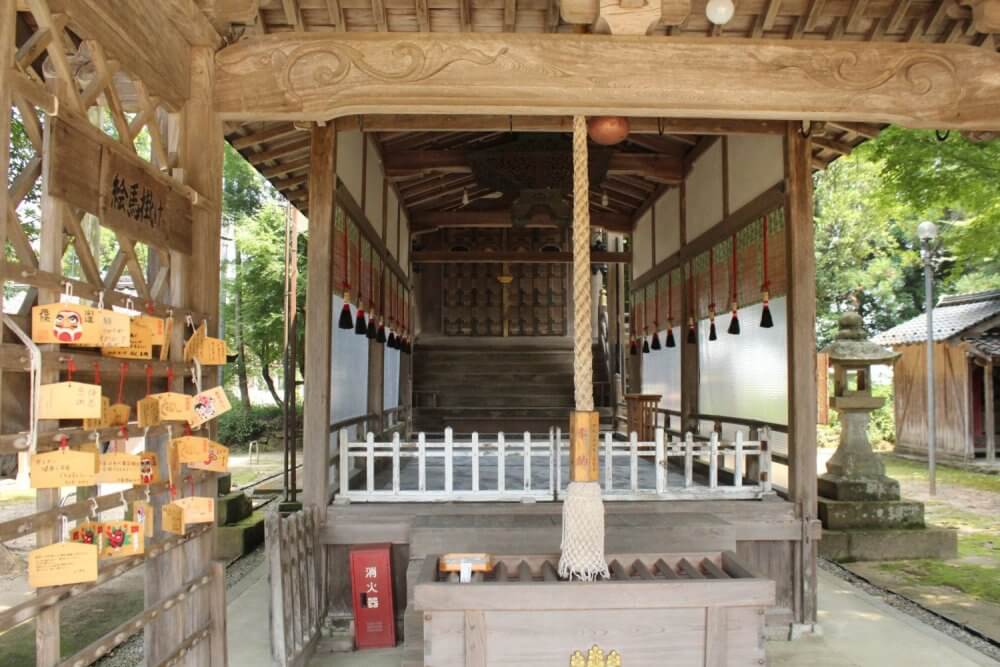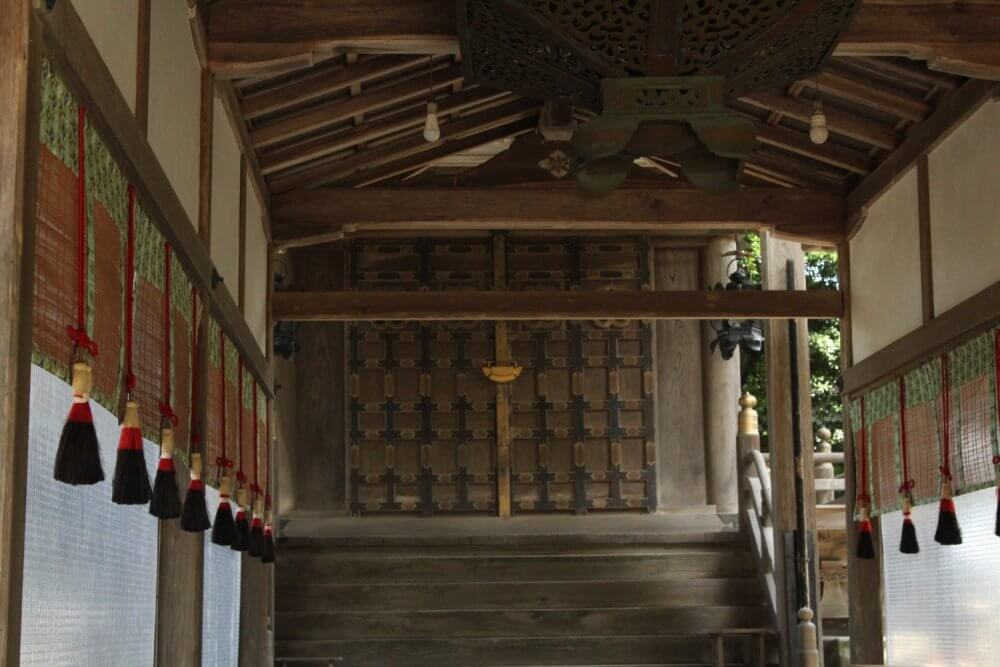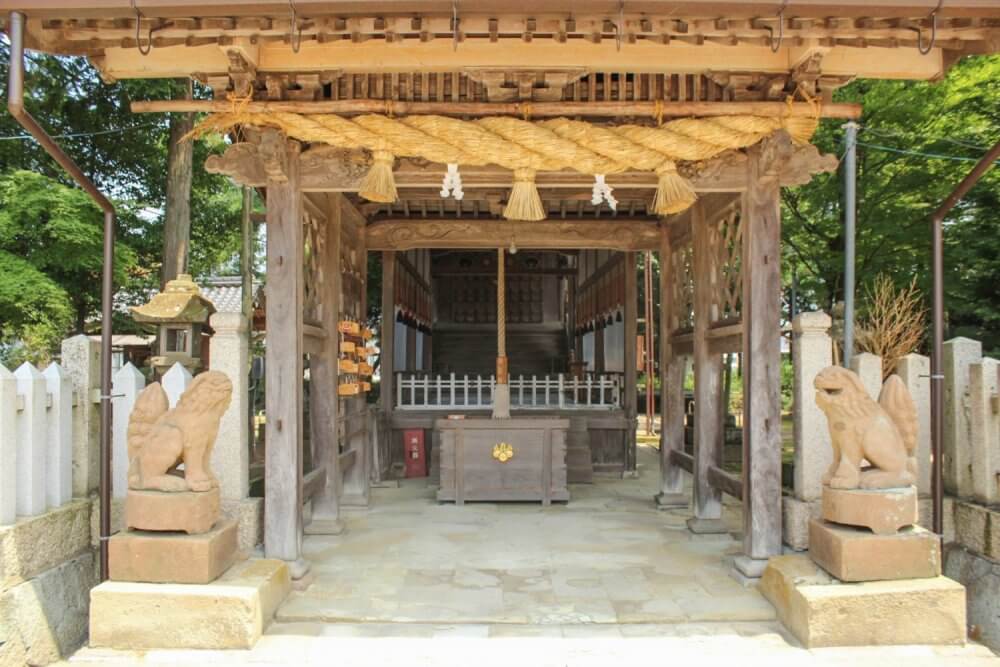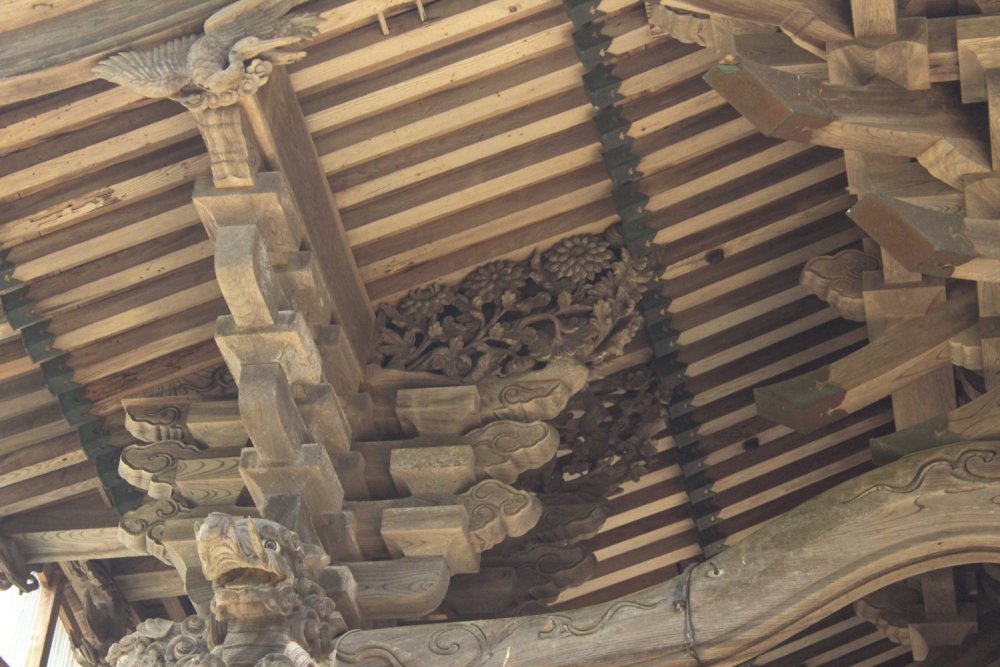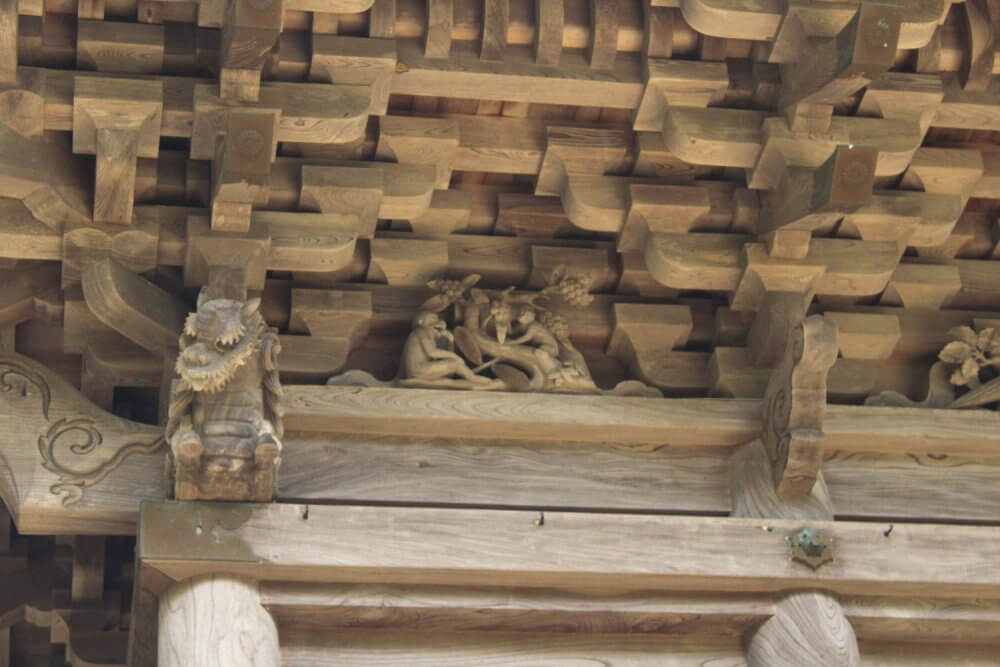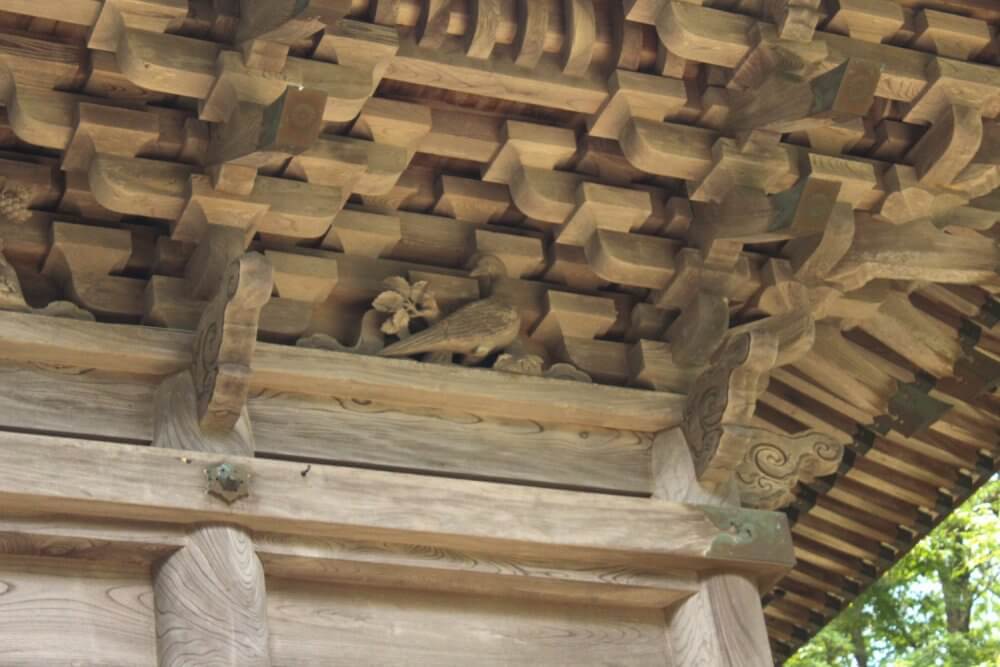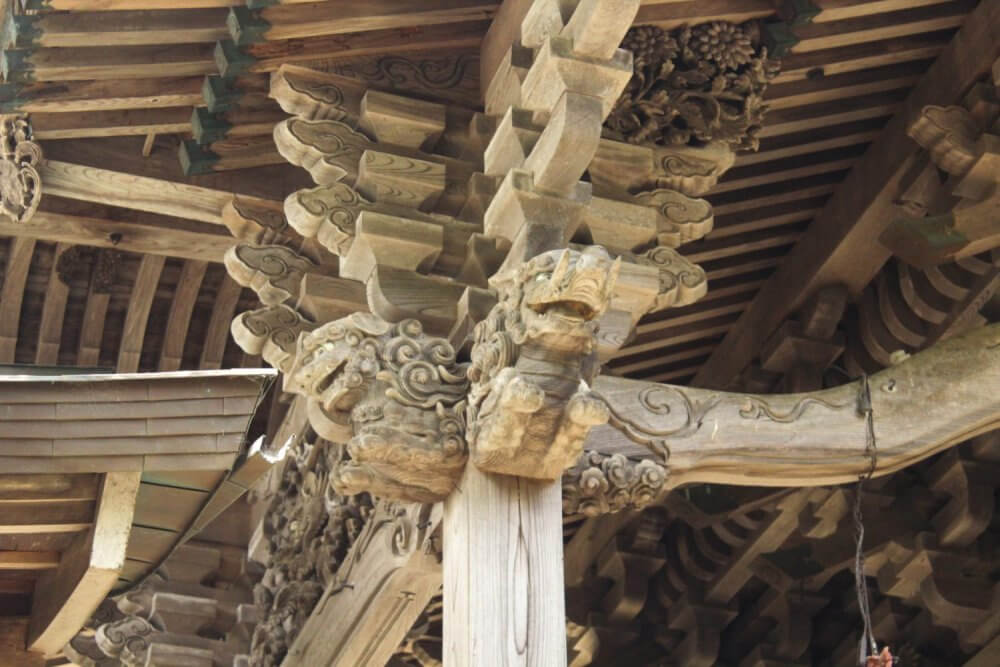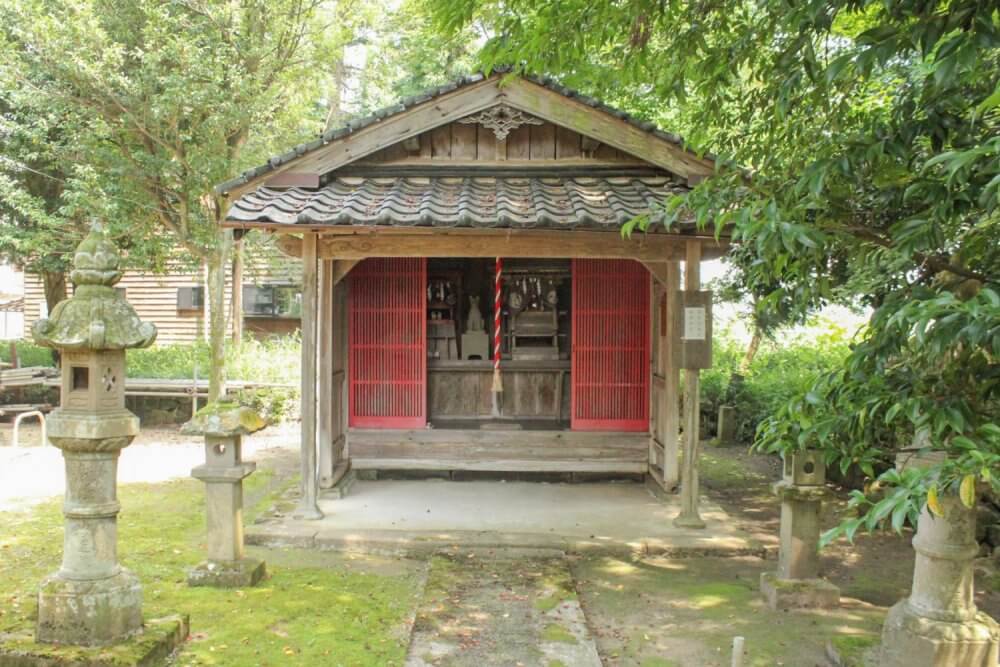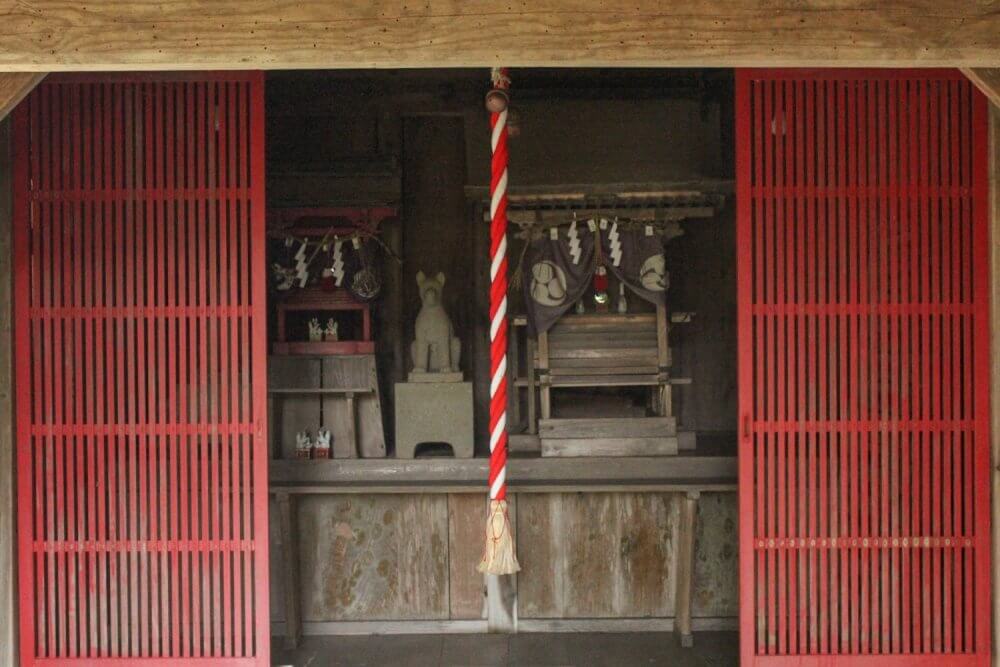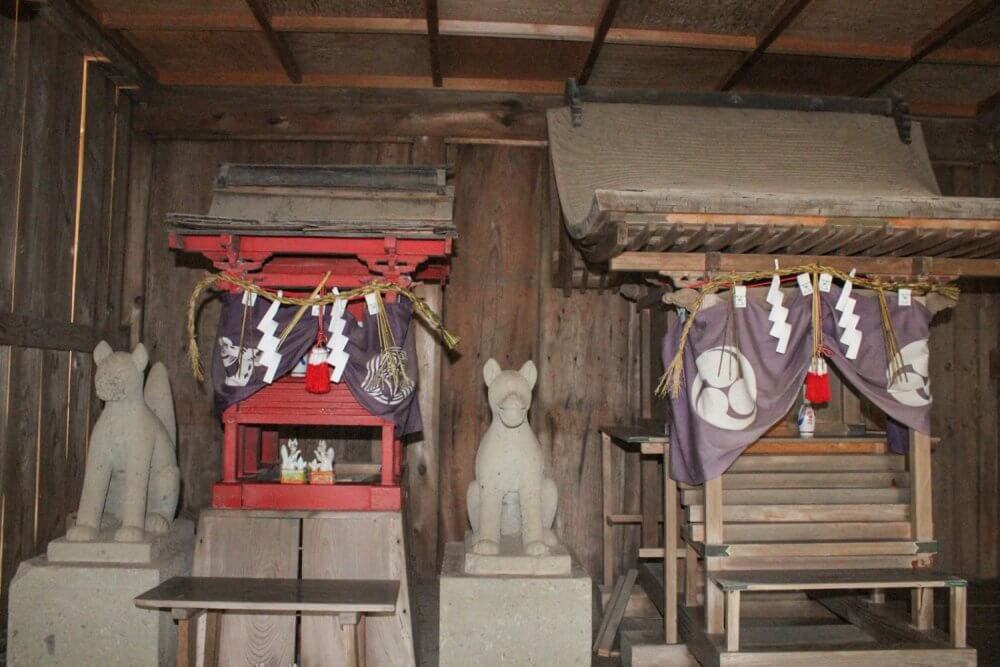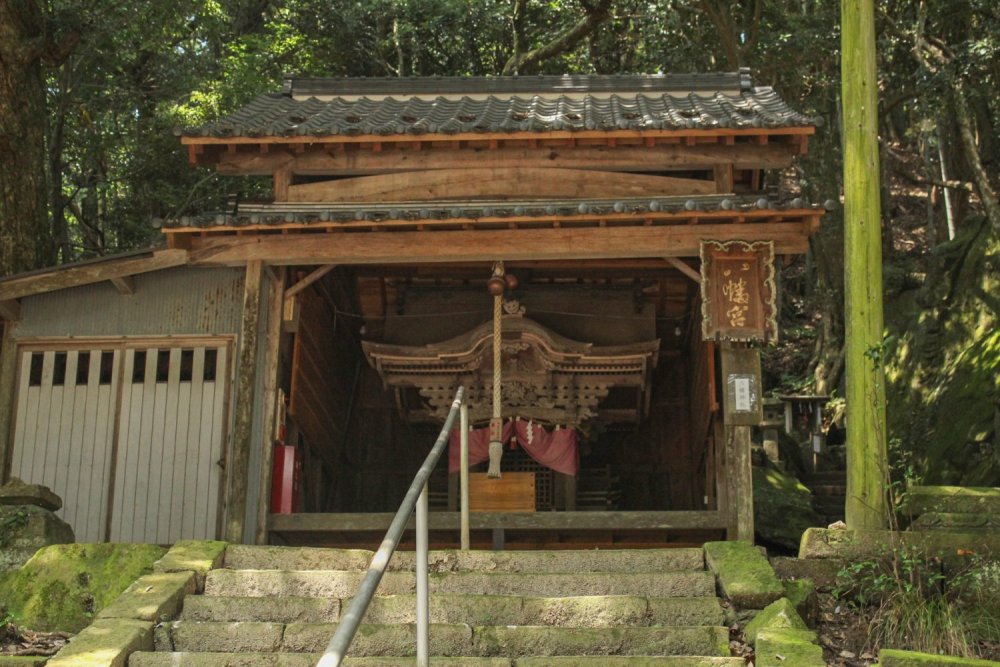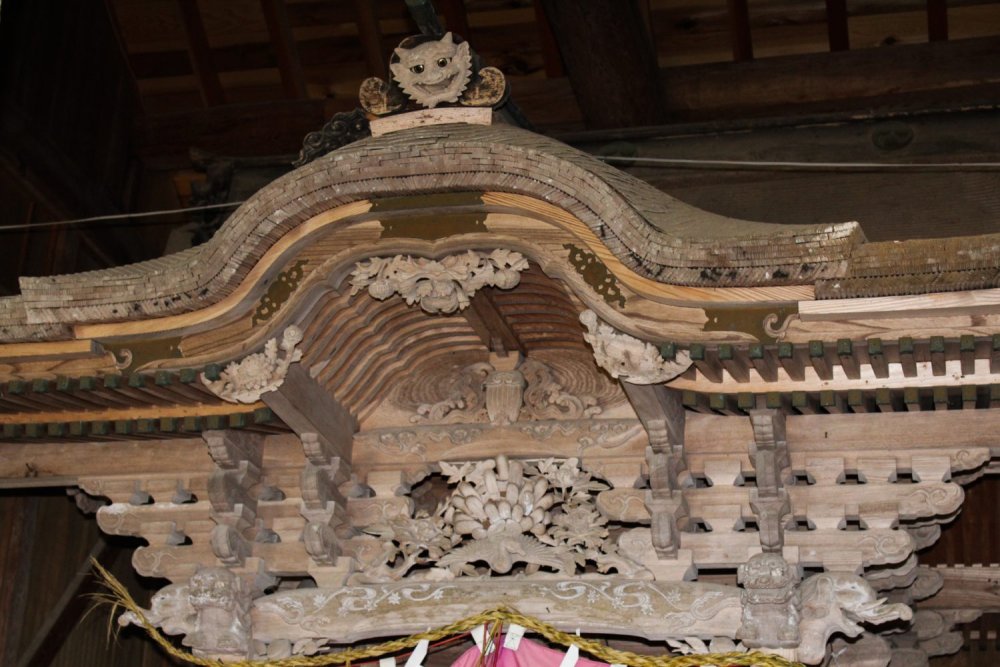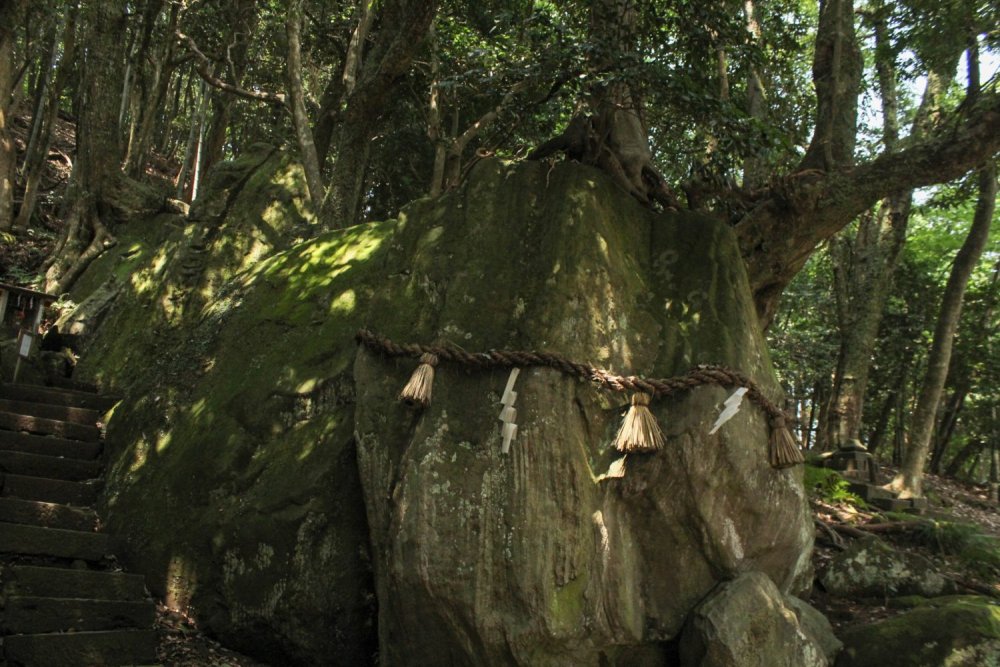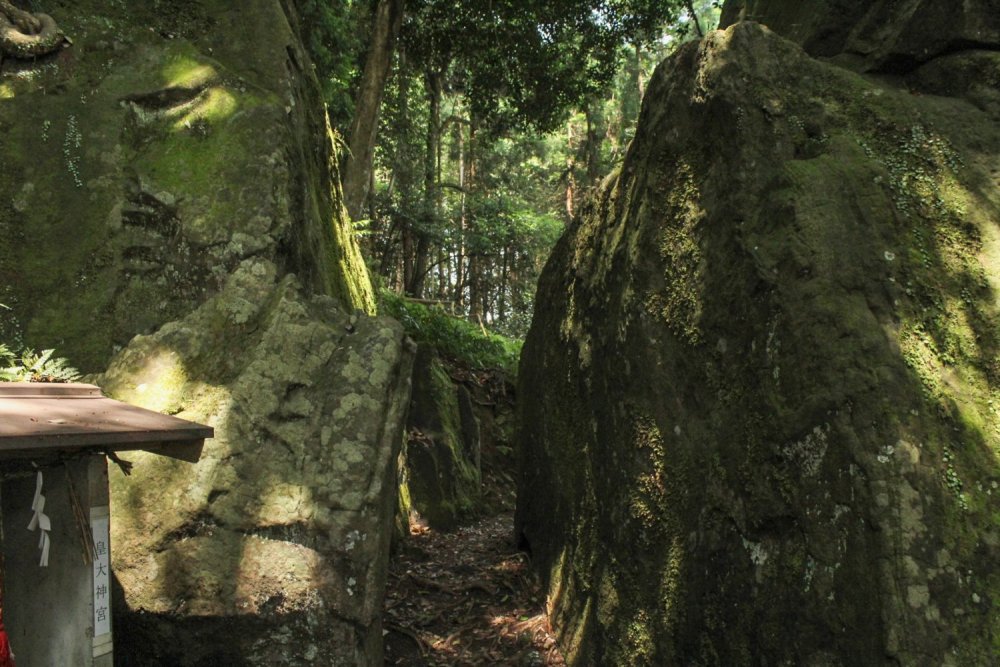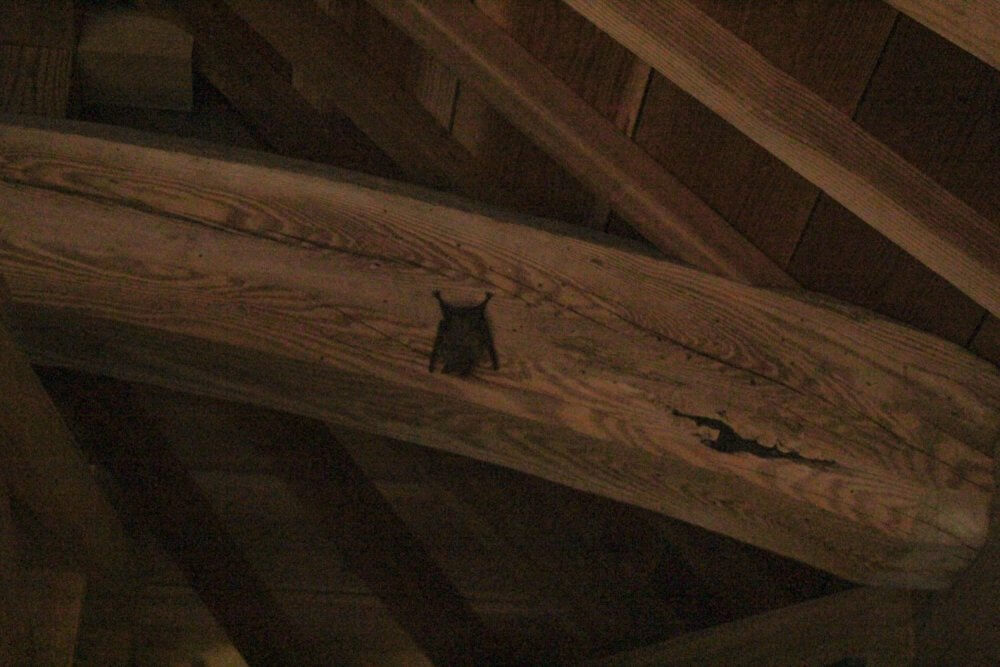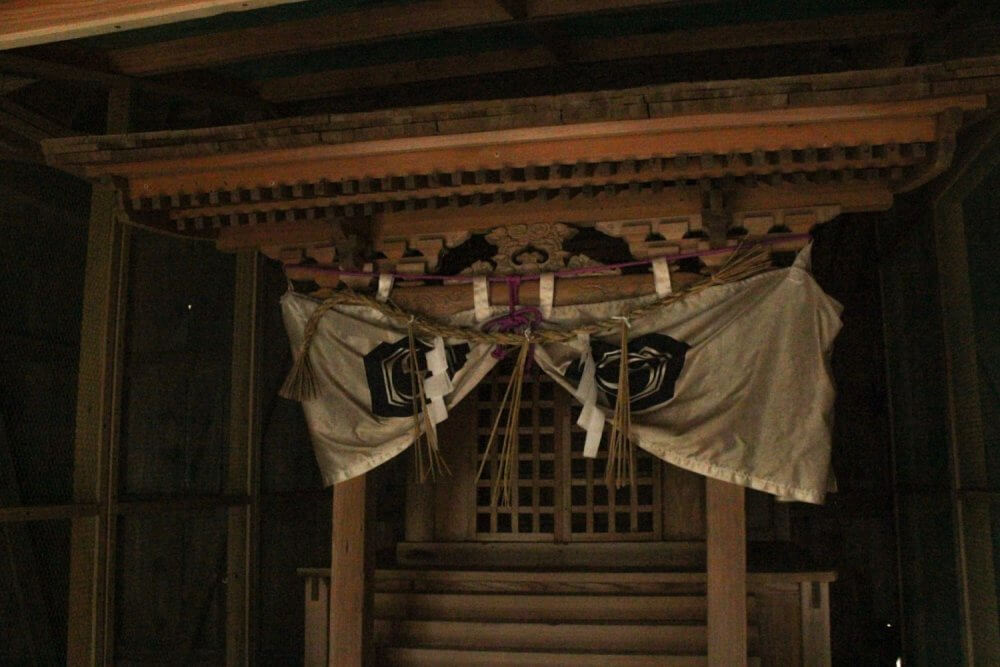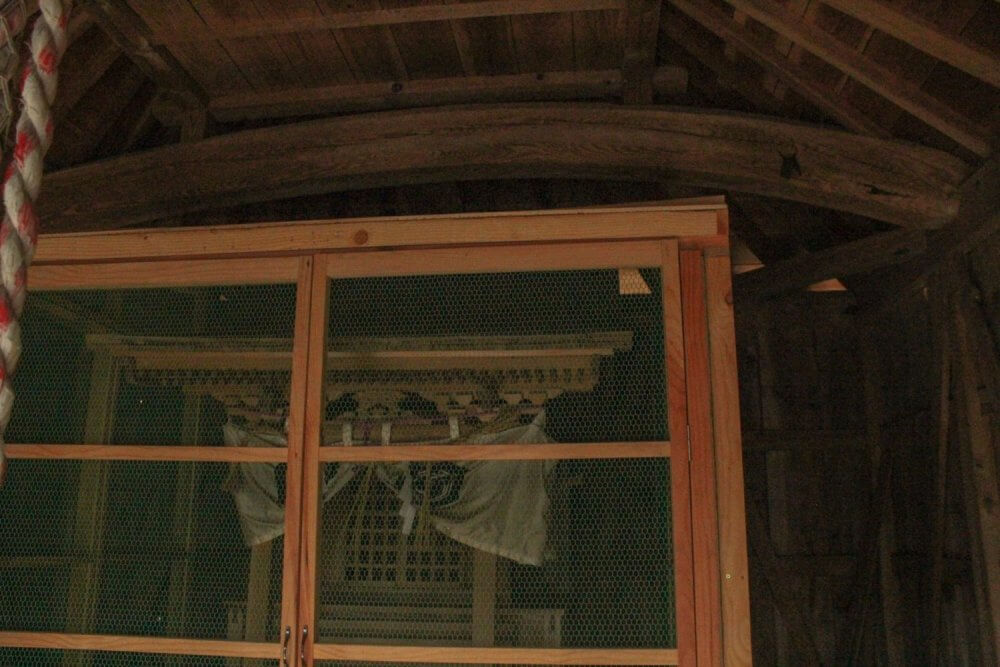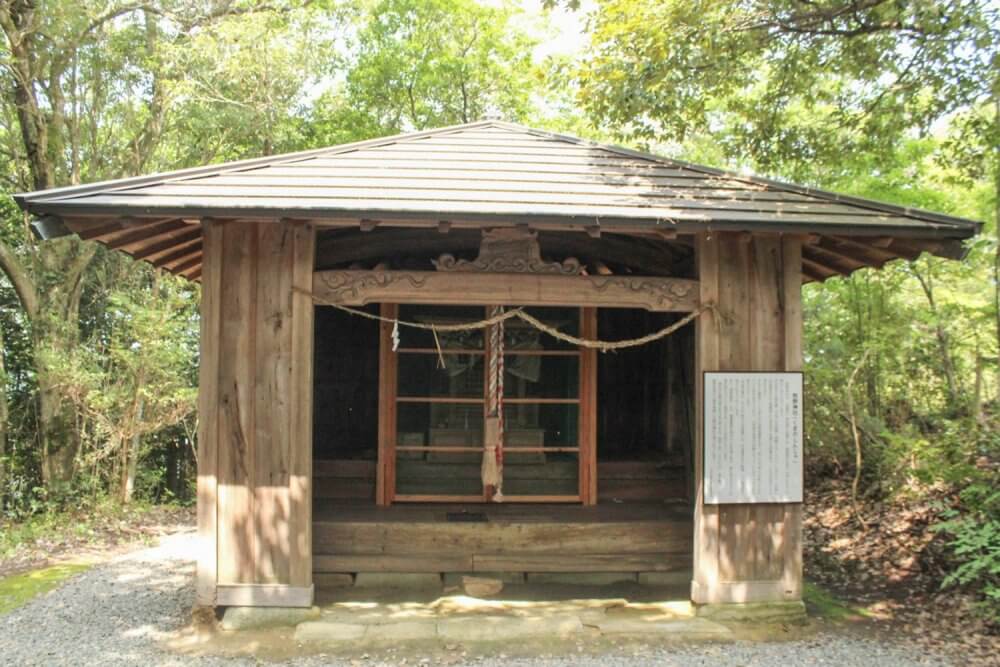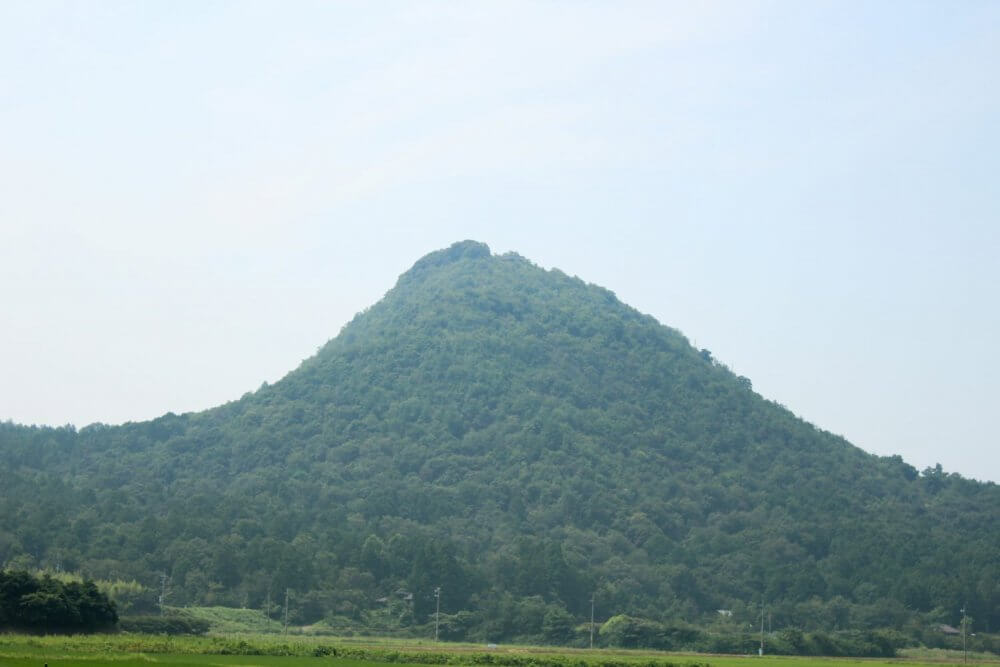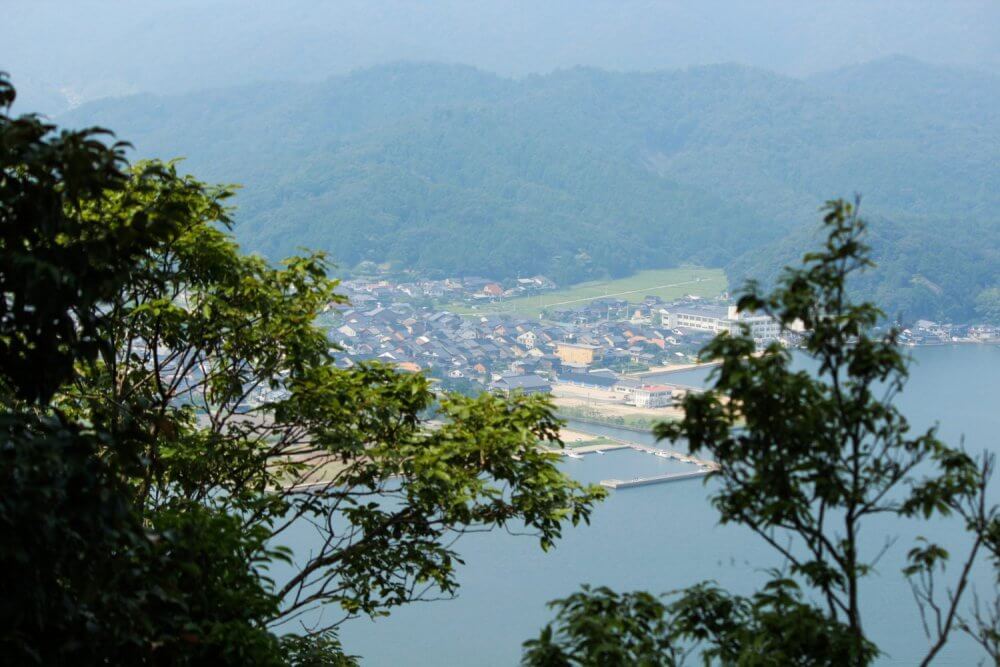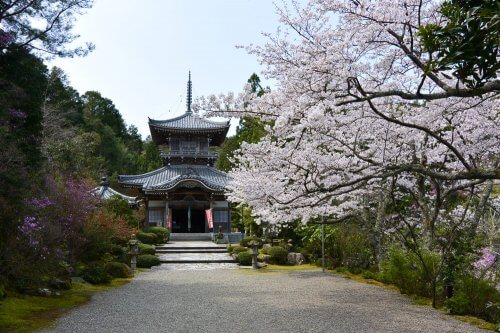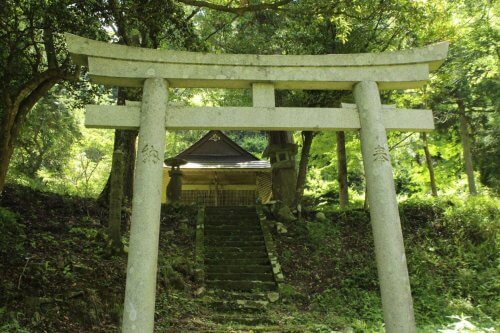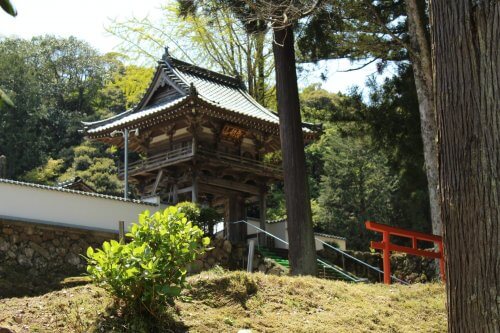Blog
Posted: August 7
Kumihama’s Shrines and Temples
Continuing our series of the shrines and temples of Kyotango we come to Kumihama. Here we will take a look at 2 of the larger temples in Kyotango, a shrine with an astrological interest, and one of the more humble shrines in one of the most stunning locations.
Nyoiji Temple
Some of you might remember this temple from the “Nyoiji Temple Spring Flower Walk”. Please rest assured that it remains photogenic into the summer.
During the Tenpyo era (729-749) the boddhisatva Gyoki came to Kumihama bay and saw fire going from the the mountain top into the bay, and back. Taking this as a good omen he pulled on a net and received the wish-granting gem (nyoi-hojyu) from the reliquary of the seven previous incarnations of the Buddha. This inspired him to found the temple at the foot of the mountain, and call it Nyoi-ji (Nyoi temple).
The Gate
Close-up of one of the Guardian Devas They certainly have big shoes to fill The gate at Nyoi-ji Temple
The Gate faces Kumihama bay and while it is still the original gate it has had extensive renovations done to it during the Showa era (1926-1989). The two statues housed in the gate are called Kongorikishi, or guardian deva, they protect the temple from evil. They were established here between 1185 and 1333.
The Hexagonal Shrine
The hexagonal shrine Close-up of the “1000 Crane Dedication”
The hexagonal shrine contains a space for people to place their “ema”, wish plagues. It also contains the “1000 Crane Dedication”. In this tradition one folds 1000 paper cranes to bring good luck, happiness, health, or sometimes world peace.
The Fudo Hall
The Fudo Shrine surrounded by greenery The myriad ornamentations within the Fudo Hall
Next to the Hexagonal Shrine is the Fudo Hall. At a height of 26m it is the only multi-story pyramidal roofed Fudo Hall in Japan. It’s style is an unusual mixing of Japanese, Chinese and Indian elements. It underwent significant reconstruction in 1983.
The Main Shrine
Entrance to the main shrine Close-up of the dragon carving
The main hall was built in the early Showa era (1920s-1930s), in the style of the Meiji era (1868-1912). There was some reconstructive work done in the middle of the Showa era. The Bodhisattva Juichimen-Kanzeon (buddhist deity of compasion) is enshrined here, and is the main subject of worship at Nyoiji Temple.
A Quiet Pond
The path curves gently around the pond The pond was quiet with only a few dragonflies about A fountain to bless the eyes A secret shrine hidden at the back A quiet spot for self-reflection
Behind the main shrine is a small pond and walk which was renovated in spring 2020. It is perfect for quiet reflection, and appreciating the nature that surrounds the temple. It also contains a fountain which is said to bless the eyes.
Honganji Temple
Built in the Kamakura era, the main building is the oldest wooden building in Kyotango. It is also the only Buddhist temple building from the Kamakura era, making it very precious. Other temples may be older but the actual building itself will likely have been rebuilt on the same site several times.
The temple buildings linked by a covered walkway Hakamagoshi bell tower
The bell tower in Honganji temple is of the hakamagoshi type, and features sloping walls on the bottom level and the bell is suspended on the top level. The two buildings of the temple feature a walkway between them, no doubt very convenient in bad weather.
Amida Buddha
The Amida Buddha statue in the shrine Close-up of the Amida Buddha statue The second building contains many ornamentations
The temple was built here because the Bodhisattva Gyoki saw a tree swarming with sandpipers which flew as if they were chanting scriptures. He was so moved that he carved the tree to represent the Amida Buddha and 1000 Buddha Statues. The statue is housed in the center of the altar, and has been designated as the cultural property of Kyoto Prefecture.
Kamitani Shrine
Kamitani Shrine, often called Kamitani Tachinomiya, was established sometime around 1596 but the current main hall was built in 1781. Its construction was inspired by Taniwa Michinushi, the lord of the Tanba district who would later marry Kawakamino Masuno Iratsume, one of Kyotango’s Seven Princesses.
The Main Shrine
The main shrine Close-up of the main shrine The entrance to the main shrine, note the large shimenawa hanging over head
There are four deities enshrined within the main shrine including Taniwa Michinushi. The straw rope across the top is a shimenawa and is used to ward off evil spirits.
Some of the carvings could only be appreciated by approaching from the side A carving of some monkeys A carving of a pigeon Forward facing carvings with painted eyes
From the side of the main shrine the intricate carvings become visible. They are done in the Tachinomiya style and are more intricate than much of the other works in the area.
Secondary Shrines
The shelter for the Inari and Sarutahiko shrines Inari shrines are painted red and feature foxes Close-up of the shrines
On one side of the main shrine is a smaller building with an Inari Shrine and a shrine to Sarutahiko. Inari shrines are traditionally painted red and associate with rice production, it is said that foxes are the messengers of Inari. Sarutahiko is seen as a symbol of strength and guidance.
Kamitani Iwakura
The shrine at Kamitani Iwakura Close-up of the shrine Close-up of the carvings
Across the road from Kamitani Shrine is Kamitani Iwakura. While the shrine here can be appreciated in its own right the main draw is the set of observational stones, used to track the stars movements.
Sacred Boulders
The boulder is considered sacred and has a shimenawa tied around it The slit for sighting the pole star
The slit between the stones is oriented north-south and is used to sight the pole star, which was the highest deity of the star faith. It is also used to mark the seasons, on the summer solstice the sun rises behind Mt. Kabuto and shines directly onto the heel stone.
Kumano Shrine
While this shrine is the smallest subject of this blog, it commands the most dramatic location. Kumano Shrine sits on top of Mt. Kabuto which givesit a stupendous view over Kumihama Bay and Shotenkyo to the sea of Japan, and over the town of Kumihama itself.
A friendly bat living in the shrine Close-up of the shrine The shrine is enclosed to protect it from damage Kumano Shrine appears very humble
Both Kawakamino Masuno Iratsume, who was the daughter of a wealthy trader from Kumihama and her husband Taniwa Michinushi, the lord of the Tanba area, are enshrined here.
Mt. Kabuto, the shrine is at the top Close-up of Kumihama The view over the bay and Shotenkyo
As mentioned you can see the view from the top is stunning, and there is an observation platform to give the best views. It’s quite a walk to get to the top, but well worth it. Just make sure you take a bottle of water with you.
Kumihama’s Shrines and Temples
There are many more shrines and temples in Kumihama. However, by only focusing on a few, more detail can be given.

